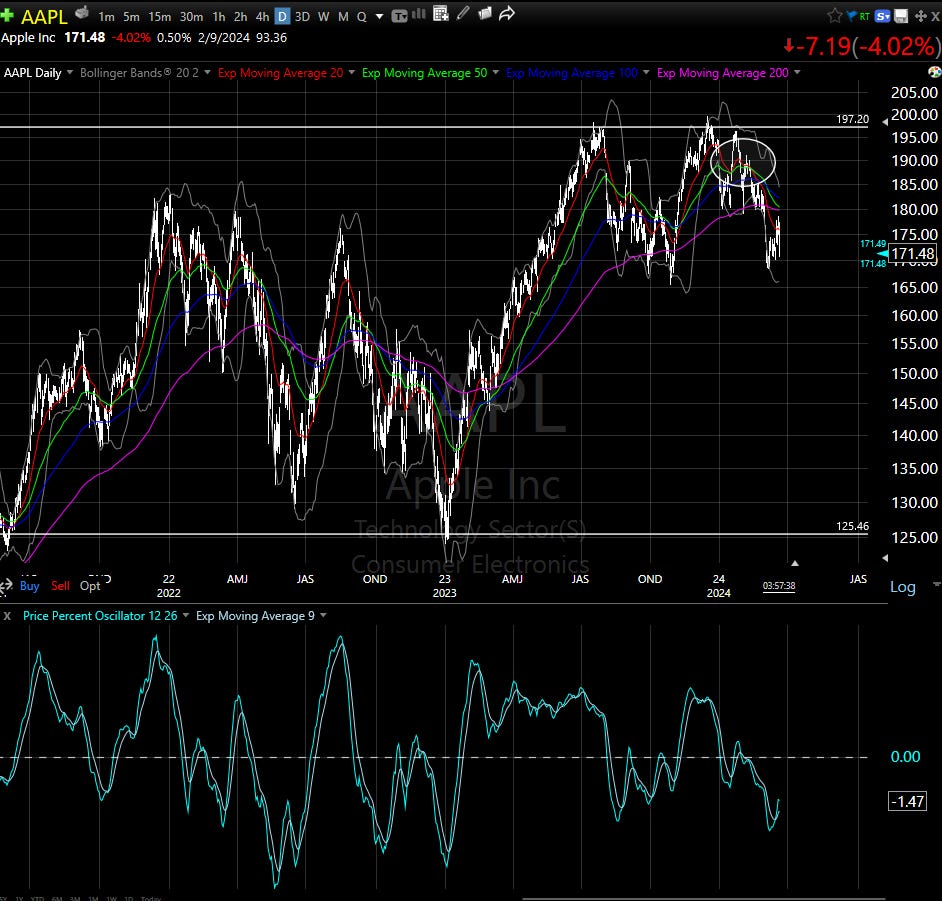How could anyone could have predicted that the beloved, iconic Apple Inc. (AAPL) would fall 15% in roughly 3 months? WRONG QUESTION! Allow me to explain.
Here’s a daily price chart of AAPL going back a few years, and as of just before today’s close. I circled where there was potential trouble brewing, but the big picture is that this stock topped out at around $200. Twice. That’s what they call a “double top,” and although it doesn’t always stop an ETF or stock from flying higher, it is an area where we technicians take a close look to see what happens. The “failure” to cross above $200 and stay there was the yellow flag, and the circled area is where the weakness started showing up in my more detailed indicators.
What’s next? I don’t know, I’m just an investment chartist! But I do know that this is still a high risk situation, and that AAPL is 6% of SPY, the second largest stock next to Microsoft (MSFT). Yet it is only 3% of DIA, the 16th largest Dow stock since that index is weighted by dollar price of the stock, not market capitalization. That has a lot to do with why on a day like today, when AAPL tumbles 4.1%, DIA holds up better than SPY.
FYI, as with many popular mega-cap stocks there are now ETFs that exist simply to short those stocks individually, either 1:1 or with leverage (2x or 3x). AAPD is the single inverse short version of AAPL. Yes, ETFs do nearly everything now! Just not as much as Artificial Intelligence is going to.
Pulling back up from the details and pictures, the more we see FAANG-type stocks like this one peel back from their all-time highs, yet the major averages keep going up, the more it looks like a broadening or more “democratic” opportunity for investors to use the stock market. How long this will last following the sharp rallies we’ve seen is what no one knows. However, it is at least encouraging that the stock market, for now, is giving us more ways to win that we’ve seen in a while.
Related: Is the American Dream of Homeownership Becoming a Myth?



